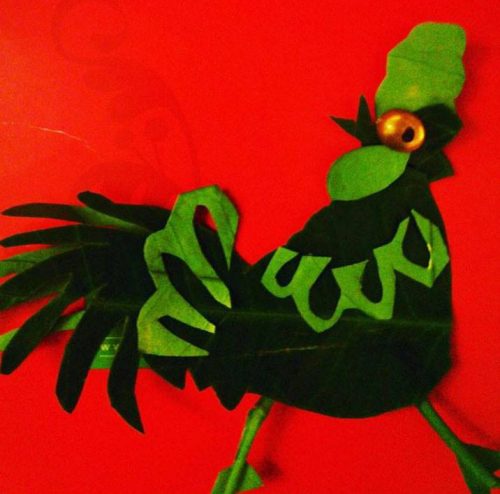Every day, we face the world through our senses. We become absorbed in sights and sounds that make up our reality, and we become convinced, no matter how dream-like it may be, that the picture painted is real. But, when we analyse the nature of that reality, we seem at a loss to know exactly what it is made of and why we should trust it. Reality comes together in our minds like a painting, as if created by an artist.
Indeed, reality is made of layers of things. Through form, colour and texture, we get an overall picture of things, but if there is even a slight difference, we know it’s not complete. Anyone can see the picture above is a rooster because it has the form and characteristics of one, but its body of leaves makes it an image of a rooster and not a real one. Instead, it is a creature that imprints on us as a rooster, but without feathery skin, shrill-sounding crows or farmyard odors. Then what is it?
The rooster also awakens us to the nature of reality. What if there is something beyond the real rooster we perceive in its tangible form, via sound, smell, touch, and (for those who enjoy KFC) taste? Isn’t it just another association made in our mind? That’s why the Buddha explained to Subhuti in the Diamond Sutra:
The Buddha said, “If you say that you can use the
thirty-two marks to see the Tathagata, then the
Cakravartin is also a Tathagata?”
Subhuti said, “World-Honored One, I understand your teaching.
One should not use the thirty-two marks to meditate on the Tathagata.”
Then the World-Honored One spoke this verse:
“Someone who looks for me in form
or seeks me in sound
is on a mistaken path
and cannot see the Tathagata.”
We know the world through the navigation deck of our eyes, ears, nose, taste buds and skin. Yet all things seem to be an association with forms and have no intrinsic reality, flowing between the real and unreal, and impermanent. Navigating reality also means interpreting a world of senses. It’s like a child in a theme park or a desire-intoxicated adult in a rowdy casino or dizzying nightclub.
Reality has become blurrier in the digital daze of the internet age, as we flit between the virtual
and the real. We have become connected to a world that is purposefully created to manipulate our minds through artificial intelligence—and everything we perceive is more in our minds than truly in front of us. Cultivating our minds has become even more vital in order to unscramble the information we are being fed with.
Russian suprematism artist Kazimir Malevich once said: “To the Suprematist the visual phenomena of the objective world are, in themselves, meaningless; the significant thing is feeling, as such, quite apart from the environment in which it is called forth.”
All things in reality are objects of our perception, and this influences our feelings. Vietnamese Buddhist monk Thich Nhat Hanh said in his book The Diamond that Cuts through Illusion that it is possible for us catch true reality. He said, “You have a perception about these things. So, when you practice generosity, don’t be caught by your perceptions and concepts; don’t be caught by form, sound, form, smell, taste, touch, and object of mind. Just behave naturally, beautifully, like you brush your teeth, like you eat your breakfast, like you drink a cup of tea.”
To see beyond illusion, Thich Nhat Hanh urges us to practice generosity because the state of emptiness is free from desire or illusion. Through practicing generosity we can realize emptiness. Because of emptiness, we can see the naked truth without leaves or feathers. Perhaps we can hear the cock a-doodle-doo of reality.

